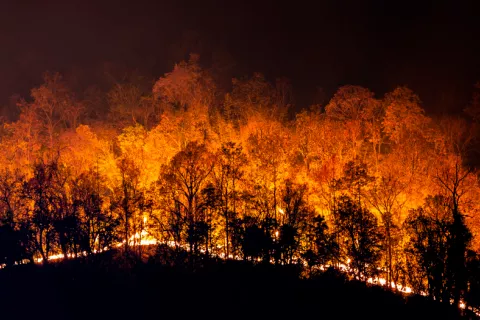
The risks of noise pollution are often underestimated, however, the United Nations Organization (UN) has published a report in which it states that this type of pollution, together with the large number of forest fires that are taking place , are a great threat to the health and well-being of people, in addition to causing environmental problems.
And it is that, according to the report Borders 2022: noise, flames and imbalances, loud or unwanted sounds that are maintained for a long time, such as those of traffic, leisure activities or the railway, can damage the physical and mental health of people, causing chronic discomfort and sleep disturbances. These alterations can lead to more problems in turn, such as heart disease and hearing or metabolic disorders, such as diabetes.
According to figures provided by the UN, each year in the European Union there are some 12,000 premature deaths caused by noise pollution, which amounts to one affected person for every five citizens. For example, in cities such as Islamabab, Bangkok, Algiers, Damascus, Ho Chi Minh City, New York or Ibadan, acceptable noise levels are exceeded every day with hardly any awareness of its effects.
Some 12,000 premature deaths caused by noise pollution are reported each year in the European Union
The group most vulnerable to these loud and prolonged sounds are younger people, older people, and marginalized communities who live near busy roads and are far from green, vegetated areas. Of course, do not forget about the animals that live in or near cities, such as pets, insects or birds.
More frequent, intense and long-lasting fires
These have been the adjectives with which the UN has described forest fires. “Between 2002 and 2016, an average of 423 million hectares of the earth’s surface burned, roughly the size of the European Union. Although fires are a natural part of the earth system, in recent years they are becoming more frequent, intense and long-lasting and this is probably due to climate change and the influence of human beings”, they highlight from the UN.
And it is that, climate change itself can lead to the appearance of fires, since it generates lightning that can be the spark that ignites a new focus of the fire. Fires have a major short- and long-term impact on health as, in addition to evacuation problems, they can also exacerbate the effects of previous illnesses on women, children, the elderly and those who are vulnerable.
In addition to all of these risks, black carbon and other pollutants from wildfires can pollute the Earth’s water supplies, accelerate melting glaciers, cause dangerous landslides, and turn tropical forests into carbon sinks. .
“Between 2002 and 2016, an average of 423 million hectares of the earth’s surface burned, approximately the size of the European Union”
The alteration in the life cycle of animals and plants is the third point of interest highlighted by the UN, since climate change is changing the natural biological rhythm of plants and animals, which use temperature, the hours of the day or the amount of rain to know when to take off their leaves, flower, bear fruit, breed, nest, pollinate, migrate or transform.
Solutions proposed by the UN
The UN has not only warned of these great threats, but has also launched possible solutions for each of them. In this way, it indicates that in order to combat urban noise pollution, the green areas available in cities must be increased. This has its explanation, and it is that the vegetation absorbs acoustic energy, disperses noise and amplifies sounds, as well as attracting animals and improving the landscape.
Another possible measure is the improvement and increase of bike lanes, in this way the space for traffic is reduced and the possibility of an alternative route for transport, much more ecological, is offered. “For their part, low-emission zones encourage electric mobility, which again contributes to noise reduction, in addition to improving air quality,” they indicate.
For wildfires, solutions focus on increased investment to reduce wildfire risks, as well as increased development of wildfire prevention and response management approaches, and more effort and funding in remote sensing capabilities such as satellites, radar and lightning detection.
Finally, from the UN they explain that “it is crucial to maintain adequate habitats and ecological connectivity, strengthen the integrity of biological diversity and coordinate international efforts along migratory routes”, In addition, they emphasize that measures be taken to reduce the levels of carbon dioxide (COtwo), which would reduce the effects of global warming.
.